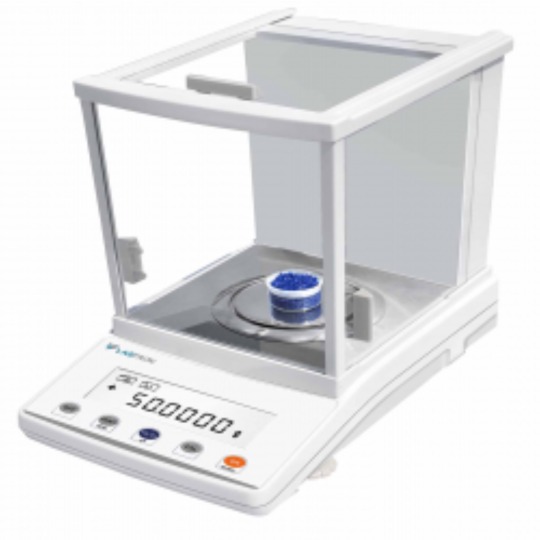#Sensor analytics
Text

Analytical HPLC-A7835 system is equipped with a flow rate range of 0.0001 to 10 ml per minute.
Integrated with a single and dual wavelength UV-Vis detector with a range of 190 to 800 nm that analyzes sample’s
absorption at different wavelengths and a high pressure pump providing continuous consistent flow. Built in column
heater provides reproducible retention time.
0 notes
Text
The Advantages of Using VivencyGlobal’s Surveillance Solutions
Vivency Global is a leading provider of surveillance solutions that help organizations protect their assets, people, and operations. With over a decade of experience in designing, implementing, and managing complex security systems, Vivency Global has a proven track record of delivering high-quality solutions that meet the diverse needs of its clients. In this blog post, we will explore some of the advantages of using VivencyGlobal’s surveillance solutions and how they can benefit your business.
Comprehensive coverage
VivencyGlobal’s surveillance solutions offer comprehensive coverage of your premises, both indoors and outdoors. They use advanced technologies such as high-definition cameras, thermal imaging, facial recognition, license plate recognition, and analytics to detect and deter potential threats, identify suspicious behavior, and provide actionable intelligence to your security team. Whether you need to monitor your office building, warehouse, parking lot, or retail store, Vivency Global can design a customized solution that fits your needs and budget.
Real-time monitoring
VivencyGlobal’s surveillance solutions enable real-time monitoring of your premises from any location, using any device with an internet connection. This means you can stay connected to your security system 24/7 and receive alerts and notifications in case of any security breaches, unauthorized access, or other abnormal activities. You can also review live and recorded footage, manage access control, and communicate with your security team or law enforcement agencies using the same platform.
Scalability and flexibility
VivencyGlobal’s surveillance solutions are scalable and flexible, meaning they can adapt to your changing security requirements as your business grows or evolves. Whether you need to add more cameras, upgrade your software, integrate with other systems, or migrate to a cloud-based platform, Vivency Global can provide you with a seamless and cost-effective solution that minimizes disruption and maximizes value.
Expertise and support
VivencyGlobal’s surveillance solutions are backed by a team of experienced security professionals who understand the latest trends, technologies, and regulations in the industry. They can provide you with expert advice, training, and support throughout the lifecycle of your security system, from design to deployment to maintenance. They can also help you optimize your system’s performance, reduce false alarms, and minimize downtime, ensuring that your security system operates at peak efficiency.
Compliance and privacy
VivencyGlobal’s surveillance solutions are designed to comply with the highest standards of privacy and data protection. They use encryption, authentication, and access control mechanisms to secure your data and prevent unauthorized access, disclosure, or modification. They also adhere to local and international regulations such as GDPR, HIPAA, PCI-DSS, and SOX, ensuring that your security system meets the legal and ethical requirements of your industry and jurisdiction.
In conclusion, VivencyGlobal’s surveillance solutions offer many advantages that can help you enhance your security posture, reduce your risk exposure, and improve your operational efficiency. Whether you need to prevent theft, vandalism, or violence, or monitor compliance, productivity, or customer experience, Vivency Global can provide you with a customized solution that meets your needs and exceeds your expectations. To learn more about VivencyGlobal’s surveillance solutions, contact us today.
#Surveillance#Security#Monitoring#CCTV#Privacy#Technology#Data collection#Intelligence#Video analytics#Remote monitoring#Access control#Intrusion detection#Biometrics#Facial recognition#Network security#Smart cameras#Privacy concerns#Threat detection#Cybersecurity#Artificial intelligence (AI)#Machine learning#Sensor networks#Crime prevention#Homeland security#Public safety
0 notes
Text
Predictive Maintenance Precision: Insights from AI
AI-Based Predictive Maintenance
AI-based predictive maintenance is revolutionizing industries by leveraging artificial intelligence to forecast equipment failures before they occur, thereby minimizing downtime, reducing costs, and enhancing operational efficiency. In this article, we delve into the significance, workings, benefits, challenges, and future prospects of AI-based predictive maintenance.
Discover how AI-based predictive maintenance is revolutionizing industries by leveraging artificial intelligence to forecast equipment failures and optimize maintenance strategies.
1. Introduction to AI-Based Predictive Maintenance
Predictive maintenance involves the use of data and analytics to predict when equipment failure is likely to occur, allowing for timely maintenance and preventing unexpected breakdowns. With the integration of artificial intelligence (AI), predictive maintenance has become more accurate, efficient, and cost-effective.
2. Importance of Predictive Maintenance in Industries
Industries across various sectors rely on machinery and equipment to maintain productivity and meet customer demands. Unexpected equipment failures can lead to costly downtime, reduced output, and compromised safety. Predictive maintenance helps mitigate these risks by enabling proactive maintenance actions based on data-driven insights.
3. Understanding AI in Predictive Maintenance
How AI Revolutionizes Predictive Maintenance
AI algorithms analyze historical data patterns and real-time sensor data to predict equipment failures with high accuracy. These algorithms continually learn and adapt, improving prediction accuracy over time.
Applications of AI in Predictive Maintenance
AI is applied in various predictive maintenance tasks, including anomaly detection, fault diagnosis, remaining useful life prediction, and scheduling maintenance activities based on equipment condition and workload.
4. Key Components of AI-Based Predictive Maintenance Systems
Data Collection and Monitoring
Data from sensors, IoT devices, and equipment logs are collected and monitored in real-time to identify abnormalities and patterns indicative of potential failures.
Machine Learning Algorithms
Machine learning algorithms process the collected data to identify correlations, trends, and anomalies, enabling predictive modeling and decision-making.
Predictive Analytics
Predictive analytics techniques, such as regression analysis and time-series forecasting, are used to predict equipment failures and prescribe optimal maintenance actions.
5. Benefits of AI-Based Predictive Maintenance
Cost Savings
By preventing unplanned downtime and minimizing maintenance costs, AI-based predictive maintenance helps organizations save money and optimize resource allocation.
Increased Equipment Reliability
Regular maintenance based on predictive insights enhances equipment reliability, prolongs asset lifespan, and improves overall operational efficiency.
Enhanced Safety
Proactive maintenance reduces the risk of equipment failures and associated safety hazards, creating a safer work environment for employees.
6. Challenges and Limitations of AI in Predictive Maintenance
Data Quality and Availability
The effectiveness of AI-based predictive maintenance relies on the quality and availability of data. Incomplete or inaccurate data can lead to unreliable predictions and false alarms.
Implementation Costs
Initial investments in AI infrastructure, sensors, and data management systems may pose financial challenges for organizations, especially small and medium-sized enterprises.
Integration with Existing Systems
Integrating AI-based predictive maintenance systems with existing equipment and enterprise software requires careful planning and coordination to ensure compatibility and seamless operation.
7. Case Studies Highlighting Successful AI-Based Predictive Maintenance Implementations
Several industries, including manufacturing, healthcare, transportation, and energy, have successfully implemented AI-based predictive maintenance solutions, resulting in improved asset performance, reduced maintenance costs, and increased operational efficiency.
8. Future Trends and Innovations in AI-Based Predictive Maintenance
The future of AI-based predictive maintenance holds exciting possibilities, including advancements in predictive algorithms, integration with emerging technologies like edge computing and 5G, and the development of predictive maintenance-as-a-service offerings.
9. Conclusion
In conclusion, AI-based predictive maintenance offers a proactive approach to equipment maintenance, enabling organizations to optimize asset performance, reduce downtime, and enhance operational efficiency. While challenges exist, the benefits of AI in predictive maintenance far outweigh the costs, paving the way for a more reliable and sustainable future.
FAQs
What industries benefit most from AI-based predictive maintenance?
How does AI improve the accuracy of predictive maintenance?
What are the primary challenges in implementing AI-based predictive maintenance?
Can small businesses afford AI-based predictive maintenance solutions?
What role does data quality play in the effectiveness of predictive maintenance systems?
#AI-based maintenance#Predictive analytics#Machine learning in maintenance#Equipment reliability#Predictive maintenance benefits#Industrial automation#Data-driven maintenance#Proactive maintenance strategies#Predictive maintenance implementation#IoT sensors in maintenance
0 notes
Text
Magnetic Sensor Analytical Balalnce

The Magnetic Sensor Analytical Balalnce could be utilized for several purposes to enhance the precision and functionality of the balance. It is used to detect the position and movement of the weighing pan. It has Five operational button panel and Cast aluminium outer covering. Capacity=200-g; Calibration weight=200-g; Minimum weighing=0.004g; Resolution=0.001g; Sensor=magnet;Pan size-ᴓ 80 mm / ᴓ 90 mm Operational temperature-5°C~25°C for more visit labtron.us.
0 notes
Text
Exploring the Future of IoT | Internet of Things
Internet of Things (IoT) has already transformed the way we perceive and interact with technology connecting everyday objects to the digital world. As we navigate through a rapidly evolving technological landscape it becomes crucial to delve deeper into the future of IoT and the endless possibilities it holds. Let’s explore the exciting advancements and emerging trends that will shape the future…

View On WordPress
#connected devices#Data Analytics#Emerging IoT Technologies#Future Technology#Industrial IoT#IoT Applications#IoT Automation#IoT Connectivity#IoT Data Privacy#IoT Ecosystem#IoT in Agriculture#IoT in Healthcare#IoT Industry Insights#IoT Infrastructure#IoT Innovations#IoT Security#IoT Sensors#IoT Sustainability#IoT Trends#Smart Homes
0 notes
Text
Distribution Feeder Automation Market Business Research, Types and Applications, Demand by 2032
Market Overview: The Distribution Feeder Automation Market refers to the market for advanced technologies and systems that automate the monitoring, control, and management of distribution feeders within an electrical distribution network. Distribution feeder automation improves the efficiency, reliability, and resiliency of power distribution by utilizing sensors, communication networks, and automation software to monitor and control power flows, fault detection, and restoration. These solutions enhance the performance of distribution feeders and enable utilities to deliver electricity more effectively.
Feeder Automation Market is projected to be worth USD 7.85 Billion by 2030, registering a CAGR of 8.2% during the forecast period (2022 - 2030)
Demand: The demand for distribution feeder automation is driven by several factors, including:
Distribution feeder automation solutions help utilities improve the reliability and resiliency of their distribution networks. By automating fault detection, isolation, and restoration, these systems minimize outage durations and enhance the overall performance of the grid, ensuring a more reliable power supply for customers.
Distribution feeder automation systems streamline operations by reducing manual interventions, optimizing power flow, and enhancing network monitoring capabilities. These solutions enable utilities to manage distribution feeders more efficiently, reduce costs, and improve the overall operational performance of their networks.
The increasing integration of renewable energy sources, such as solar and wind power, into the distribution grid presents operational challenges. Distribution feeder automation helps utilities manage the intermittent nature of renewables, optimize power flow, and ensure grid stability, facilitating the integration of clean energy sources.
Latest technological developments, key factors, and challenges in the Distribution Feeder Automation Market:
Latest Technological Developments:
Intelligent Sensors and IoT Integration: Distribution feeder automation is leveraging intelligent sensors and Internet of Things (IoT) integration to monitor real-time data from various points along the distribution feeders. These sensors provide insights into voltage levels, current flow, fault detection, and other parameters, enabling quicker fault localization and resolution.
Advanced Communication Protocols: Modern distribution feeder automation systems are adopting advanced communication protocols like for seamless data exchange between field devices and control centers. This facilitates real-time monitoring, remote control, and efficient data transmission.
Decentralized Control and Edge Computing: Distribution feeder automation systems are moving toward decentralized control and edge computing. This allows decision-making and control to occur closer to field devices, reducing latency and enhancing responsiveness.
Distributed Energy Resource (DER) Management: With the integration of distributed energy resources like solar panels, wind turbines, and energy storage systems, feeder automation systems are being developed to manage these resources effectively, ensuring grid stability and optimal energy distribution.
Advanced Analytics and AI: Distribution feeder automation is incorporating advanced analytics and artificial intelligence to analyze data from various sources. AI algorithms can predict and prevent potential faults, optimize energy flows, and enhance overall feeder performance.
Key Factors:
Reliability Enhancement: Distribution feeder automation improves the reliability of electricity distribution by enabling quicker fault detection, isolation, and restoration. This minimizes outage durations and enhances overall grid reliability.
Efficient Grid Management: Feeder automation allows utilities to manage the distribution grid more efficiently. Load balancing, voltage regulation, and fault management can be automated, leading to optimized energy delivery.
Integration of Renewable Energy: As the penetration of renewable energy sources increases, distribution feeder automation becomes crucial for managing the intermittent nature of these resources and maintaining grid stability.
Grid Resilience and Outage Management: Feeder automation systems enhance grid resilience by providing real-time data on grid conditions and faults. This facilitates faster response and restoration during outages, minimizing customer impact.
Challenges:
Interoperability: Integrating various devices and protocols into a cohesive feeder automation system can be challenging due to the need for interoperability between different vendors and technologies.
Cybersecurity: With increased connectivity and data exchange, distribution feeder automation systems face cybersecurity threats. Ensuring the security of these systems is paramount to prevent unauthorized access and data breaches.
Cost and Infrastructure: Implementing distribution feeder automation can involve significant upfront costs, including hardware, software, and training. Retrofitting existing infrastructure for automation may also pose challenges.
Complexity of Data Management: Feeder automation generates vast amounts of data that need to be effectively managed, analyzed, and acted upon. Handling this complexity can be demanding.
Change Management: Transitioning from manual to automated processes requires change management efforts to train personnel, address resistance, and ensure smooth integration.
Maintenance and Upgrades: Ensuring the proper functioning of feeder automation systems over time requires regular maintenance and potential upgrades to keep up with technology advancements.
Distribution feeder automation is at the forefront of modernizing electricity distribution networks. While it offers significant benefits in terms of reliability, efficiency, and resilience, addressing technical challenges and ensuring a smooth transition is crucial for successful implementation.
By visiting our website or contacting us directly, you can explore the availability of specific reports related to this market. These reports often require a purchase or subscription, but we provide comprehensive and in-depth information that can be valuable for businesses, investors, and individuals interested in this market.
“Remember to look for recent reports to ensure you have the most current and relevant information.”
Click Here, To Get Free Sample Report: https://stringentdatalytics.com/sample-request/distribution-automation-solutions-market/10965/
Market Segmentations:
Global Distribution Feeder Automation Market: By Company
• ABB
• Eaton
• Grid Solutions
• Schneider Electric
• Siemens
• Advanced Control Systems
• Atlantic City Electric
• CG
• G&W Electric
• Kalkitech
• Kyland Technology
• Moxa
• S&C Electric Company
• Schweitzer Engineering Laboratories (SEL)
Global Distribution Feeder Automation Market: By Type
• Fault Location
• Isolation
• Service Restoration
• Automatic Transfer Scheme
Global Distribution Feeder Automation Market: By Application
• Industrial
• Commercial
• Residential
Global Distribution Feeder Automation Market: Regional Analysis
The regional analysis of the global Distribution Feeder Automation market provides insights into the market's performance across different regions of the world. The analysis is based on recent and future trends and includes market forecast for the prediction period. The countries covered in the regional analysis of the Distribution Feeder Automation market report are as follows:
North America: The North America region includes the U.S., Canada, and Mexico. The U.S. is the largest market for Distribution Feeder Automation in this region, followed by Canada and Mexico. The market growth in this region is primarily driven by the presence of key market players and the increasing demand for the product.
Europe: The Europe region includes Germany, France, U.K., Russia, Italy, Spain, Turkey, Netherlands, Switzerland, Belgium, and Rest of Europe. Germany is the largest market for Distribution Feeder Automation in this region, followed by the U.K. and France. The market growth in this region is driven by the increasing demand for the product in the automotive and aerospace sectors.
Asia-Pacific: The Asia-Pacific region includes Singapore, Malaysia, Australia, Thailand, Indonesia, Philippines, China, Japan, India, South Korea, and Rest of Asia-Pacific. China is the largest market for Distribution Feeder Automation in this region, followed by Japan and India. The market growth in this region is driven by the increasing adoption of the product in various end-use industries, such as automotive, aerospace, and construction.
Middle East and Africa: The Middle East and Africa region includes Saudi Arabia, U.A.E, South Africa, Egypt, Israel, and Rest of Middle East and Africa. The market growth in this region is driven by the increasing demand for the product in the aerospace and defense sectors.
South America: The South America region includes Argentina, Brazil, and Rest of South America. Brazil is the largest market for Distribution Feeder Automation in this region, followed by Argentina. The market growth in this region is primarily driven by the increasing demand for the product in the automotive sector.
Click Here, To Buy Report: https://stringentdatalytics.com/purchase/distribution-feeder-automation-market/10966/?license=single
Reasons to Purchase Distribution Feeder Automation Market Report:
Comprehensive Market Insights: Global research market reports provide a thorough and in-depth analysis of a specific market or industry. They offer valuable insights into market size, growth potential, trends, challenges, and opportunities, helping businesses make informed decisions and formulate effective strategies.
Market Analysis and Forecasts: These reports provide detailed analysis and forecasts of market trends, growth rates, and future market scenarios. They help businesses understand the current market landscape and anticipate future market developments, enabling them to plan and allocate resources accordingly.
Competitive Intelligence: Global research market reports provide a competitive landscape analysis, including information about key market players, their market share, strategies, and product portfolios. This information helps businesses understand their competitors' strengths and weaknesses, identify market gaps, and develop strategies to gain a competitive advantage.
Industry Trends and Insights: These reports offer insights into industry-specific trends, emerging technologies, and regulatory frameworks. Understanding industry dynamics and staying updated on the latest trends can help businesses identify growth opportunities and stay ahead in a competitive market.
Investment and Expansion Opportunities: Global research market reports provide information about investment opportunities, potential markets for expansion, and emerging growth areas. These reports help businesses identify untapped markets, assess the feasibility of investments, and make informed decisions regarding expansion strategies.
Risk Mitigation: Market reports provide risk assessment and mitigation strategies. By analyzing market dynamics, potential challenges, and regulatory frameworks, businesses can proactively identify risks and develop strategies to mitigate them, ensuring better risk management and decision-making.
Cost and Time Efficiency: Conducting comprehensive market research independently can be time-consuming and expensive. Purchasing a global research market report provides a cost-effective and time-efficient solution, saving businesses valuable resources while still gaining access to reliable and detailed market information.
Decision-Making Support: Global research market reports serve as decision-making tools by providing data-driven insights and analysis. Businesses can rely on these reports to support their decision-making process, validate assumptions, and evaluate the potential outcomes of different strategies.
In general, market research studies offer companies and organisations useful data that can aid in making decisions and maintaining competitiveness in their industry. They can offer a strong basis for decision-making, strategy formulation, and company planning.
About US:
Stringent Datalytics offers both custom and syndicated market research reports. Custom market research reports are tailored to a specific client's needs and requirements. These reports provide unique insights into a particular industry or market segment and can help businesses make informed decisions about their strategies and operations.
Syndicated market research reports, on the other hand, are pre-existing reports that are available for purchase by multiple clients. These reports are often produced on a regular basis, such as annually or quarterly, and cover a broad range of industries and market segments. Syndicated reports provide clients with insights into industry trends, market sizes, and competitive landscapes. By offering both custom and syndicated reports, Stringent Datalytics can provide clients with a range of market research solutions that can be customized to their specific needs
Contact US:
Stringent Datalytics
Contact No - +1 346 666 6655
Email Id - [email protected]
Web - https://stringentdatalytics.com/
#Distribution Feeder Automation#Smart Grid Technology#Intelligent Sensors#IoT Integration#Edge Computing#Advanced Analytics#AI in Grid Management#Microgrid Integration#Fault Detection#Voltage Regulation#Load Balancing#Power Distribution Optimization#Grid Resilience#Outage Management#Renewable Energy Integration#Distribution System Efficiency#Energy Management Solutions.
0 notes
Text
nami secures $10.5M Series A for its multi-sensing platform

- By Nuadox Crew -
Singapore-based nami, a multi-sensing platform and ecosystem enabler for the Internet of Things (IoT) industry, has announced the successful closure of its Series A financing round.
The company raised $10.5 million from strategic investors, including Verizon Ventures, Amavi Capital, INSPiRE, and Aconterra.
nami's platform allows enterprise customers to quickly deploy intelligent IoT services by processing raw sensor data, converting it into actionable metadata, and using it to trigger automation across the entire IoT environment.
With the funding, nami plans to expand its team and geographical presence to deploy its digital sensing infrastructure across residential and commercial buildings on three continents. The company aims to build an ecosystem of AI sensors catering to various industries, such as IoT players, internet service providers, and insurance companies.
--
Source: nami
Read Also
Survey: 2 in 3 US homeowners use smart home devices to monitor their home
#nami#iot#sensor#computing#singapore#automation#analytics#data science#ai#artificial intelligence#internet of things
0 notes
Text
Smart Service: The Future of RO Water Purifier Maintenance and Repairs

The reverse osmosis (RO) water purifier is used extensively worldwide. There is no doubt that they have become a popular choice for homes and offices. In today’s world, it is one of the most trusted methods of getting clean drinking water. It is important, however, to maintain and repair the purifier regularly to ensure it functions properly.
Previously, water purifiers were only maintained by technicians who would replace filters or repair damaged components. The downsides, however, include high costs, low maintenance effectiveness, and limited monitoring capabilities.
With smart service technology, we can solve our problems for a longer period of time. Additionally, it can revolutionize the process of maintaining and repairing RO water purifiers, saving both time and money. Learn about the future of RO water purifiers, current challenges, and how new technologies can help.
Benefits of Having Smart Services
Real-time monitoring
It can help monitor your RO water purifier in real-time, checking issues before they become big issues for the owners. It ensures quick fixes of problems by sending instant alerts to the users’ connected devices.
Better maintenance
It will use data analytics to inform users of any maintenance needs in advance by checking the current situation. For instance, if there’s any weak or older part that could be damaged with further use. One of the main benefits will be a prediction about those issues. It will predict when the purifier needs to be checked before issues come, helping to extend its durability.
Remote diagnostics and repairs
Technicians or maintenance providers can diagnose and repair issues remotely, reducing site visits and costs. IoT-enabled sensors installed in the RO water purifier will send data to a cloud-based analytics platform and notify users of the current updates.
Reduced costs
With new technology services, costs can be reduced by making predictions, suggesting possible issues, and reducing on-site visits. Also, it improves customer service, as users can access technical support through mobile applications. This means problems can be resolved quickly and efficiently, causing less inconvenience to owners.
Current Challenges Faced in Maintenance and Repairs of RO Water Purifier
The way we currently try to maintain our RO water purifiers has several limitations. Many users lack the technical expertise, for instance, that is required to perform maintenance tasks themselves. Unfortunately, this leads to reliance on technicians, which can be costly, as they charge high fees for their services.
In addition, we don’t and can’t control maintenance visits, which can result in contaminated water and affects the machine. Moreover, replacing damaged components costs a lot which can increase the overall maintenance budget.
Furthermore, there is no real-time monitoring feature. This means it can be difficult to know about issues and make decisions.
Read More: https://ramservicesandsales.com/2023/04/14/smart-service-the-future-of-ro-water-purifier-maintenance-and-repairs/
#Benefits of Having Smart Services#best doorstep RO services in Nagpur#Best RO Water Purifier Service#Best RO Water Purifier Service in Nagpur#Better maintenance#Cloud-based analytics#IoT-enabled sensors
1 note
·
View note
Text
Germany was the Leader of Smart Shipping Container Market
The smart shipping container market will grow at a compound annual growth rate of 18.4% in the years to come, to touch a value of USD 15,341.5 million by 2030.
The development of the industry can be chiefly credited to the guideline of temperature, recover security, and instantaneous GPS tracking, which these containers allow. The sensors combined into gathering and tracking data on the…
View On WordPress
#Artificial intelligence in logistics#Blockchain in shipping#Cargo security#Condition monitoring#Container telematics#Container tracking#Container tracking solutions#Data analytics#energy efficiency#Fleet optimization#Growth opportunities#IoT in shipping#Key players#market trends#Real-time monitoring#Remote sensing#Smart ports#Smart sensors#Smart shipping container#Supply chain management#Technological advancements
0 notes
Text
How Real-Time Condition Monitoring Can Predict and Prevent Equipment Failures
Real-time condition monitoring is a powerful tool that can help maintenance and reliability professionals predict failures and mitigate production downtime seamlessly. Here are some steps that maintenance and reliability professionals can take to use real-time condition monitoring effectively:
Identify critical equipment: Start by identifying the equipment that is most critical to your…

View On WordPress
#Automated alerts#Equipment failures#Equipment sensors#Key performance indicators#Mitigating downtime#Predictive analytics#Proactive maintenance#Production downtime#Real-time condition monitoring#Reliability professionals
0 notes
Link
Running a manufacturing unit is challenging due to various external and internal factors. While companies invest in the efficiency of their staff through corporate training, they also need to enhance the efficiency of machines. Therefore, the production becomes static at a certain saturation point. Nevertheless, production needs to be improved due to the wear and tear of the machines.
The introduction of predictive maintenance has changed the scenario drastically, as manufacturing units can now predict the maintenance and repair required for a production unit. According to the reports, the global predictive maintenance market size was 7.3 billion USD in 2022. But, the market size will be around 64.3 billion USD by 2030. So, the huge growth in market size suggests that IoT predictive maintenance is the next big thing.
#predictive maintenance#predictive maintenance solutions#predictive maintenance for manufacturing#predictive maintenance software#prescriptive maintenance#preventive and predictive maintenance#predictive maintenance companies#iot predictive maintenance#pdm maintenance#types of predictive maintenance#condition monitoring maintenance#preventive maintenance and predictive maintenance#condition monitoring predictive maintenance#predictive maintenance system#predictive maintenance analytics#explain predictive maintenance#predictive maintenance technologies#predictive preventive maintenance#predictive maintenance vibration analysis#predictive maintenance sensor#predictive maintenance industry 4.0
1 note
·
View note
Text
Sensor Data Analytics gather useful data to enhance work
Sensor Data Analytics gather useful data to enhance work
Sensors are being used more and more in our daily lives, whether it be in automated production lines, self-driving cars, or even something as basic as thermostats. Almost anything we can measure—from light intensity to vibrations to the presence of a nearby person—can be tracked and analysed with the aid of sensors.
Sensor Data Analytics
Sensor data is particularly important for monitoring…

View On WordPress
#iot sensor data analytics#pros of sensor data analytics#sensor anomaly detection#sensor data analytics#sensor data analytics abnormalities
0 notes
Link
0 notes
Text
Sensor Data Analytics Market is Booming Worldwide According to New Research Report
Sensor Data Analytics Market is Booming Worldwide According to New Research Report
Market Highlights
As technology is growing, the big data have increased substantially, promoting the demand for data analysis for competitive advantage. Growing number of businesses have shaped up an upsurge demand to track activities on the company websites and other associated websites. Similarly, the emergence of social media sites and the increasing importance of sentiment analysis and…
View On WordPress
#Sensor Data Analytics Market#Sensor Data Analytics Market Analysis#Sensor Data Analytics Market Growth#Sensor Data Analytics Market Research#Sensor Data Analytics Market Share#Sensor Data Analytics Market Size
0 notes
Text
Latest Arrivals: In-line soft-sensor labscale Bioreactor System for CHO cell Process Development
Yokogawa released the BR1000 Advanced Control Bioreactor System for upstream bioprocess control and automation of biologics development and manufacturing. The BR1000 is a lab-scale bioreactor system that can accommodate 1L to 5L stir-tank vessels for mammalian cell culture.
Free product enquiry Visit: https://www.pharmaceutical-tech.com/products/yokogawa/inline-softsensor-labscale-bioreactor-system-for-chocell-process-development
#Yokogawa latest arrivals#yokogawa products#laboratory analytical instruments#laboratory equipments#pharma industry products#pharmaceutical equipments#inline soft sensor labscale bioreactor system#br1000 products#latest bioreactors#pharma manufacturing equipments
0 notes
Link
“Sensor Data Analytics” Report Provides A Detailed Analysis Of Global Market Size, Regional And Country-Level Market Size, Segmentation, Market Growth, Market Share, And Competitive Landscape.
0 notes